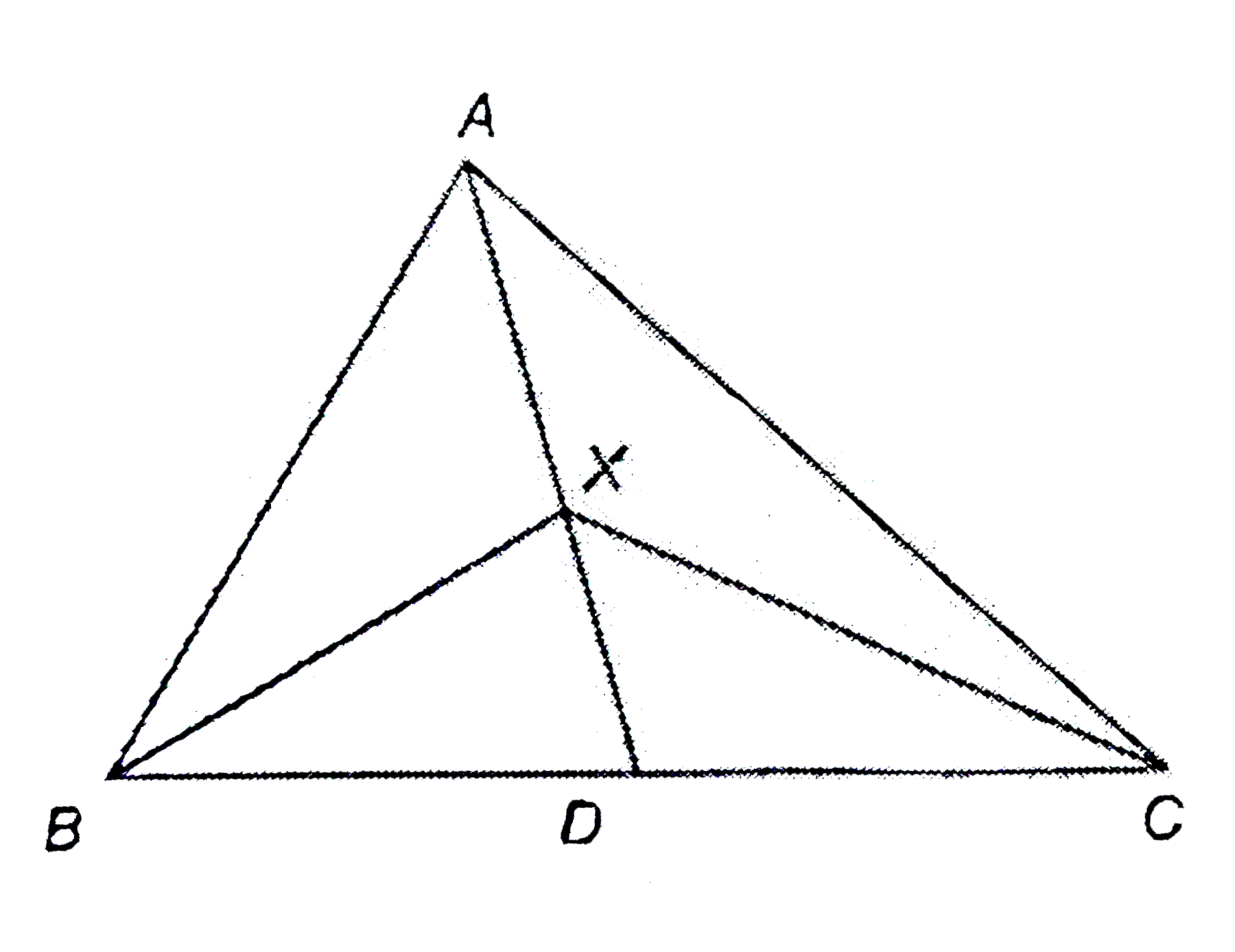If AD is median of triangle ABC and P is a point on AC such that area (ΔADP):area(ΔABD)=2:3., then area (ΔPDC):area(ΔABC) is equal to:
1:5
5:1
1:6
6:1
The correct Answer is:C
To solve the problem, we need to find the ratio of the area of triangle PDC to the area of triangle ABC given that AD is a median of triangle ABC and the ratio of the areas of triangles ADP and ABD is 2:3.
1. Understanding the Triangle and Median:
- Let triangle ABC have a median AD. This means that D is the midpoint of side BC.
- Therefore, the area of triangle ABD is equal to the area of triangle ADC.
2. Setting Up the Areas:
- Let the area of triangle ABD be denoted as S.
- Since AD is a median, the area of triangle ADC is also S.
- The total area of triangle ABC is 2S (since Area(ABC)=Area(ABD)+Area(ADC)).
3. Using the Given Ratio:
- We know from the problem statement that:
Area(ADP)Area(ABD)=23
- Let the area of triangle ADP be AADP. Then:
AADP=23⋅S
4. Finding the Area of Triangle PDC:
- The area of triangle ABD can be expressed as:
Area(ABD)=Area(ADP)+Area(PDC)
- Therefore, we can write:
S=AADP+Area(PDC)
- Substituting AADP:
S=23S+Area(PDC)
- Rearranging gives:
Area(PDC)=S−23S=13S
5. Finding the Ratio of Areas:
- Now we need to find the ratio of the area of triangle PDC to the area of triangle ABC:
Area(PDC)Area(ABC)=13S2S=13⋅12=16
Conclusion:
The ratio of the area of triangle PDC to the area of triangle ABC is:
Area(PDC)Area(ABC)=16
- Let triangle ABC have a median AD. This means that D is the midpoint of side BC.
- Therefore, the area of triangle ABD is equal to the area of triangle ADC.
- Let the area of triangle ABD be denoted as S.
- Since AD is a median, the area of triangle ADC is also S.
- The total area of triangle ABC is 2S (since Area(ABC)=Area(ABD)+Area(ADC)).
- We know from the problem statement that:
Area(ADP)Area(ABD)=23
- Let the area of triangle ADP be AADP. Then:
AADP=23⋅S
- The area of triangle ABD can be expressed as:
Area(ABD)=Area(ADP)+Area(PDC)
- Therefore, we can write:
S=AADP+Area(PDC)
- Substituting AADP:
S=23S+Area(PDC)
- Rearranging gives:
Area(PDC)=S−23S=13S
- Now we need to find the ratio of the area of triangle PDC to the area of triangle ABC:
Area(PDC)Area(ABC)=13S2S=13⋅12=16
The ratio of the area of triangle PDC to the area of triangle ABC is:
Area(PDC)Area(ABC)=16
Similar Questions
Knowledge Check
In ΔABC, P is a point on BC such that BP:PC=4:5 and Q is the mid - point of BP. Then area (ΔABQ) : area (ΔABC) is equal to :
A1:3B1:9C2:9D2:5ABC is a triangle with base AB. D is a point on AB such that AB = 5 and DB = 3. What is the ratio of the area of ΔADC to the area of ΔABC ?
A32B23C35D25ABC is a triangle with base AB. D is a point on AB such that AB = 5 and DB = 3. What is the ratio of the area of ΔADC to the area of ΔABC ?
A3/2B2/3C3/5D2/5
AD is a median of triangle ABC. G is a mid point of AD. If area of triangle ABC is 16 sq. cm. Find the area of triangle GDC
View SolutionIn parallelogram ABCD, P is a point on side AB and Q is a point on side BC, prove that
(i) ΔCPDandΔAQD are equal in area.
(ii) area (ΔAQD)= area of ΔAPD+ area of ΔCPB
View SolutionFind the ratio of area of ΔADE to Δ ABC

View SolutionThe medians of ΔABC intersect at point G. Prove that:
area of ΔAGB=13× area of ΔABC
View SolutionIn a triangle ABC, ∠C=60∘and∠A=75∘ If D is a point on AC such that the area of the ΔBAD is √3 times the area of the ΔBCD, then the ∠ABD is
View Solution

